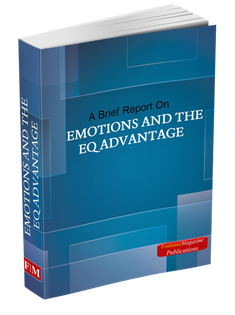 In the dynamic landscape of small business, leadership plays a pivotal role in steering the ship toward success. This holds true not only for traditional brick-and-mortar establishments but also for the ever-expanding realm of online businesses. In this article, we will explore the key elements of leadership excellence in small businesses, shedding light on the unique challenges and opportunities faced by both traditional and online ventures. Visionary Leadership: One of the cornerstones of leadership excellence in a traditional small business is the ability to cast a compelling vision. Visionary leaders inspire their teams with a clear sense of purpose, driving motivation and fostering a shared commitment to the company's goals. In the online business realm, this involves not only navigating market trends but also staying ahead of the curve in the rapidly evolving digital landscape. Adaptability and Innovation: Small businesses, including online ventures, must be agile and quick to adapt to changes. Effective leaders recognize the importance of innovation and are willing to embrace new technologies and trends. Whether it's adopting the latest e-commerce tools or implementing cutting-edge marketing strategies, staying ahead in the online business world requires a leader who is open to change and unafraid to explore uncharted territories. Communication and Collaboration: In the interconnected world of a traditional small business, communication is key. Leaders must be adept at fostering open lines of communication within their teams, ensuring that everyone is aligned with the company's vision. In online businesses, where virtual teams may be scattered across the globe, effective communication becomes even more critical. Utilizing collaboration tools and establishing clear communication channels is essential for success. Empowering and Developing Teams: Leadership excellence involves not only setting a vision but also empowering teams to achieve it. Traditional small businesses thrive when leaders invest in the development of their employees, providing opportunities for skill enhancement and career growth. In the online business space, this includes leveraging online training platforms and creating a virtual work environment that encourages continuous learning and professional development. Resilience and Risk Management: Traditional small businesses often face uncertainties, and effective leaders must be resilient in the face of challenges. This involves not only bouncing back from setbacks but also proactively managing risks. In the online business arena, where cybersecurity threats and digital disruptions are prevalent, leaders must be vigilant in implementing robust risk management strategies to safeguard the company's operations and reputation. Conclusion: Leadership excellence is the cornerstone of success for small businesses, whether they operate in traditional or online spheres. Visionary leadership, adaptability, effective communication, team empowerment, and resilience are all crucial elements that contribute to a thriving business. As the business landscape continues to evolve, small business leaders must remain agile, innovative, and committed to nurturing a culture of excellence within their organizations. Call to Action: To small business leaders navigating the complexities of today's competitive environment, remember that leadership excellence is an ongoing journey. Embrace change, invest in your team, and stay attuned to industry trends. By fostering a culture of continuous improvement and innovation, you not only position your business for success but also contribute to the growth and sustainability of the broader small business ecosystem. As you lead, inspire, and adapt, you pave the way for a brighter future for your business and the communities it serves. Thank you for reading folks. Continue becoming the best you can be. Take Care. Be Well. Stay Safe. Richard Richard Fontanie iMAGE: Pexels - tim-douglas 6205491 Article written with assistance from Chat GPT
11 Comments
Are you a leader or a follower? It’s a question that is often asked with the implication that there is only one real answer. Either you are a leader, or you are not. You are fit only to be shepherded by the strong, intelligent, and brave. What a way to look at leadership!
Before we continue, it is important that you know that this is not the case. Leaders are important, but so are followers. After all, where would leaders be without followers? The world needs leaders, but it also needs followers. It’s also okay to start as a follower with the aim of becoming a leader, or to be a leader today and a follower tomorrow. Whatever the case, it’s probably easier to break the question up into questions that address the qualities of leadership. This article won’t tell you whether you are a leader or a follower, but it will help you to answer the question reliably for yourself. Are You Confident With The Situation? Confidence is important to leadership, both confidence in yourself to lead and to handle the presenting situation. If you aren’t sure that you can lead or aren’t familiar with the type of situation that you are faced with, you probably are not the best person to lead in that situation. When you pass up a leadership position in this circumstance it will protect you from making a critical error as a leader but it will also protect the team by allowing a better prepared person to step forward, increasing the team’s chances of success. You should also have confidence in your team. Without a good team, the project will likely fail. If you don’t see much chance of success, do you want to be a leader or a follower when the ship goes down? Sometimes the decision to be a leader or a follower is based more on the situation than on your ability. How Do You Handle Pressure? When faced with great responsibility, some people rise to the occasion and others collapse under the pressure. Knowing which one you are can help you decide not only whether you are right for the position but just as important, whether the position is right for you. It is also critical to consider what kind of position you want. Some leadership positions mean that you are truly at the top of the organization, while other leadership positions mean that you are in charge of a team but are also answering directly to someone else. Sometimes the latter position is often more stressful because you are caught between the top and the bottom. It is like being the meat in the sandwich. Do You Have The Will To Serve? This is an interesting question because often people think that leaders need to be directive, strong, and controlling to be leaders. However many of the best leaders are those that serve others rather than being overly directive and controlling. Sometimes these leaders are considered soft rather than strong. But that really is an erroneous perception. Servant leaders are strong in developing people, helping them to become the best that they can be, not afraid to be followers, build systems based on cooperation, coordination, collaboration and commitment. They take risks to carry out their vision by truly engaging others in their vision. The difference occurs when leaders tell people what to do, when to do it and how to do it rather than engaging them in what to do and leaving it up to them when and how to do it. So the question asks you to consider what kind of leader you want to become. Can You Learn From The Canadian Geese? The Canada Goose has learned to lead and to follow. When flying in formation they use their formation to reduce the wind and increase their speed. But the leader doesn’t always stay in front of the formation. When it becomes tired and feels like it can no longer lead it falls back and another one takes over. The Canadian goose is not afraid to lead and follow when necessary. The moral of this story is that leaders can learn to lead as well as to follow. Do You Think Big Or Small? A final question to ask yourself is whether you think big or think small. Leaders often influence systems as they try to decide how best to handle large decisions with large implications. Leaders have to think big. Followers, on the other hand, often have a narrow set of responsibilities that deal with more specialized knowledge. Followers have to think small. Once again, there’s nothing wrong with thinking small, it just means that you are probably more valuable working with the details of your current position rather than working with the sweeping organizational choices that leaders often have to deal with. In Conclusion The question asking whether you are a leader or a follower is a misleading. It implies that leaders and followers are cast in different molds. The truth is, whether you are more fit to be a leader, or a follower depends less on who you are as a person and more about the situation. The real question to ask yourself is whether you have the experience and skills required to take on the job and do it well. The Canadian goose knows when to lead and to follow based on the situation at hand. So does a great leader. When you start asking the question based on the situation rather than based on yourself, you realize that the question shouldn’t be asked about what’s best for you but what’s best for the team. If you are what is best for the team, become the leader and serve your team or organization to the best of your ability and help your followers to grow so that they can become the best that they can be. If you are having second thoughts, let someone else take the lead. Then if you are still interested in becoming a leader develop your skills, personality, and experience to meet future challenges. Thank you for reading and always stay safe, be well and continue becoming the best version of yourself. Richard.  What the heck is The AMSIR OF CHANGE. Simply put it is a way to get your head around the change process in any organization. It is an acronym for Awakening, Mobilization, Stabilization, Institutionalization, and Resurgence. It is something that I have talked about in many of my past articles and more recently in my eBooks “Leaders Driving Change: Leading Transformational Change In The Workplace” and “The Changing Workplace PLR” found in the Storefront. In those books, however, I hadn’t mentioned AMSIR, so I would like to outline it in this article. But first when it comes to organizational change there are basically two approaches. Now these approaches are explained below but are more complicated and filled with differing dynamics in the cryptic explanation. So you are cautioned to be careful as you read them.
The AMSIR Of Change. In most cases a leader who follows the developmental approach to change follows an AMSIR approach. In summary the AMSIR approach respects the following cycle. Stage 1: Awakening – There is a recognition by the leader that there is need to challenge the status quo. There is work to be had regarding the clarity of a new vision, mission, goals, values and action plans. A renewed organization rises to meet the changing conditions. Stage 2: Mobilization – There is back and forth movement towards the new direction. There is need to step back from moving ahead because not everyone is moving in the same direction. Those who want to hang on to the past want things as they were. Others want to move forward. This is usually a messy time but also allows time for creativity and experimentation. Slowly organizational structures begin to shift and there is varying degrees of acceptance and non-acceptance. There is a combination of people digging and moving forward. People are engaged in one way or the other. Often stress levels run high and it is incumbent upon the leader to manage the tensions. In my books I call this the muddled middle. Stage 3: Stabilization – After the shifting takes place a settling in or a settling down begins to take hold. While the mobilization stage is underway different rules and regulations start to find their way into a new order. New ways of work, coordination, integration begin to emerge and there is a slow process of freezing the reawakened organization. People begin to do things differently – a renewed culture finds its way into the organization. The leadership team and management initiate new control processes to stabilize the new order. Stage 4: Institutionalization – In this phase people become comfortable with the direction and want to keep it. The different way “we do things around here” is solidified. The new normal has arrived and people don’t want to change. Leaders and managers don’t want to rock the boat. They too are comfortable. They want to keep everyone pulling in the same direction – their direction. In time people begin going through the motions, there is less life, they are comfortable and creativity takes a back seat. If not careful, leaders and managers become blind to the forces of change sweeping other organizations. “It’s ok for them, they say, but not us.” The organization grows stagnant, frozen in time, protected and choked with bureaucracy. Monuments are built to honor the past. The organization loses its vitality and begins to wither and die. Stage 5: Resurgence and reawakening - Ah, but someone begins to recognize that the life of the organization is stagnant. Perhaps new blood is required. A change agent is needed. Either one with a Fast Agent Approach or a Developmental Approach depending on the overall requirements and openness of the leadership team and management. The cycle starts anew. In conclusion it may be time to take a look at your own organization and determine where you are in the cycle and if organizational change is required to meet new realities. Use the AMSIR Change Model to assess this. You will need to act if you are in the Institutional phase because you do not want to let opportunities pass you by or let your organization fall by the wayside. Many businesses that stretched back 100 to 150 years have failed in the past few years. People thought they would last for another 100 to 150 years. What happened? The leadership team didn’t fully appreciate that they were moribund and institutionalized. Do you want to be like them? Thank you for reading and remember, Stay safe, keep healthy and continue becoming the best version of yourself. Richard  It’s easy for leaders when things are running smoothly. It can be fun, rewarding and downright amazing. In these situations the leader is rewarded handsomely and everyone – well almost everyone – appears content. But what happens when the leader is under fire, when things don’t seem to be going right and what was once seen as the ‘good times’ turn to the ‘bad times.’ This is when a leader needs some serious leadership skills to hold it all together. Skills like: 1. Grit: Grit is defined as courage, determination, and strength of character, but the final blend of those characteristics yield a quality that’s perhaps best summarized by one word: toughness. Good leaders hold the team together in tough times by staying committed and focused. But, they also know how to bend, to be flexible, and to change what needs to change to meet new contingencies. 2. Optimism: While grit mainly relates to the present, optimism is a component of leadership that looks to the future. A leader who has a positive view of the outcome is creating a mental framework for the team to pull through, because they foster the belief that something great is on the other side. Their sense of optimism about what is to come brings the team forward. 3. Pragmatism: While a leader needs grit and optimism, they also need to be practical, using intelligence and common sense to navigate their way through the given situation. Having rose colored glasses for the future is one thing but having them on as you look at the present can lead to costly mistakes. 4. Selflessness: When things go sour some leaders will try to save their own skin. This is not good as people see through the manipulative moves. The leader that is worth following does whatever is necessary to take corrective action without regard to self. Such a leader is more concerned with how to save the team and finds ways to resolve situations with the least amount of harm to the team and individuals within the team. 5. Resolution: Tough times beget rough times. During tough times people often begin to gripe, become unsettled, grumble, complain and thwart efforts to make things right. This tests the leader’s mettle. Here the leader must become resolute and even show ‘tough love’ towards those who are dragging the team down. This is not always easy but in the long run team members will be grateful. 6. Encouragement: A good leader encourages the team during a tough time to help them find the drive to make it through. Sometimes encouragement can be as simple as wandering around the group, patting some backs, and giving smiles or friendly words. This is the time for the leader to put into practice “seeing is believing” – if team members can experience encouragement then their mood is lightened and their mindset shifts from “can’t do” to “can do”. 7. Preparedness: A good leader never finds their team unexpectedly thrust into bad times without some prior preparation. A good leader understands risks and develops a plan to cover as many contingencies as possible and takes corrective action when things don’t go exactly the way they were hoping. 8. Courage: Fear can undermine the entire mission, whether it is on the battlefield, a sporting field, or the sales floor. A good leader has courage and inspires his team to weather the storm. A good leader faces fear and helps others to face theirs so that they can overcome the tough situation. Tough situations can occur at any time within business. It could come about because of an economic downturn, unrest due to a merger, shifting organizational priorities, organizational re-design and so on. These are times when the leader must step up and call upon the skill sets outlined in this article. It is a tall order but as I said at the beginning when things are running smoothly the leader’s role is easy, but when things turn difficult the leader must step through the barriers and provide the leadership that the teams needs to survive and thrive. Thank you for reading, and as always become the best you can be. Stay safe and keep well. Richard Fontanie  We all have the potential to become a leader, yet many fall short in developing their ability to become one or to reach beyond the status quo. There are a variety of reasons why this may be so ranging from not knowing what to do to sheer laziness in becoming the best that they can be as leader. If you want to develop your leadership abilities then the five points covered in this article may help you to overcome areas that may be holding you back. 1: Become a Follower. The heading of this topic may sound counterintuitive to you but consider this. There are potential leaders who view becoming a follower as something beneath them, whereas it is an essential quality for moving forward. There are few if any leaders in the world who have become one without the help and advice of other leaders. Excellent leaders have learned to be excellent followers in their development. Find yourself a mentor. Follow him or her around. Watch what they do and glean the positive elements of their actions. A leader-mentor is someone who has more experience than you, someone who you look up to and want to be like. Someone who shares your values, ethics and principles. A mentor will help you become focused and motivated; provide you with honest feedback; teaches you to problem solve and encourages your growth and development. You need not be ashamed to follow and be inspired by someone. You will learn much more than if you walk alone. It takes a bit of humility to follow someone, but if you don’t you will never have what is needed to guide others. Following a mentor also prepares you to become a mentor of other potential leaders. 2. Be A Continuous Learner. Make a point of nurturing a growth mindset. You can’t know everything, but you can become an expert in your field. And it is in this capacity that you will be trusted. Open your mind to not only learning the ‘hard technical skills’ in your area of expertise but also the ‘soft skills’ you will need to relate to others. Leadership is about engaging others to move forward, to follow a vision and to have others take action on a shared vision. In order to do that leaders need necessary soft skills to engage their followers. 3: Know your Values and Commit to them. Great leaders believe in firm positive values. Take the necessary time to uncover your values and then live and defend them. One of the major breakdowns among leaders is that they do not follow the values they preach. This is most unfortunate because followers become jaded, skeptical and seek to remove themselves as a follower. Here are five key values of successful leaders.
4. Become a Public Speaker One of the most stressful and difficult skills is to become a public speaker. Yet if you want to become a leader you must acquire the ability to speak in front of an audience. There is no doubt that public speaking can indeed be stressful, and even scary, but it’s a habit you have to get into. Public speaking can be learned through practice as many have witnessed, for instance:
5. Passionately Adhere to Your Vision Spend the necessary time in cultivating your vision – where you would like to be. Followers follow a leader with vision. It has been said that most people like to be led but they only follow leaders who are passionate about their vision. In the process of leading with passion be yourself rather than being like someone else. Let your authenticity shine through your actions and continually act with integrity. These five steps alone will not make you a leader, but if you master them you will be on your way to become one. A measure of a good leadership is the ability to influence, thus by following these five steps you will learn what it takes to influence others. Thank you for reading and as always take care, be safe and become the best version of yourself. Richard Fontanie Resource: Become A Leader: Find the Leader Within You. Type in “Leader” in the search bar on the Front Page at www.fontaniemagazine.com and you will find 94 references for leader and leadership.  Is book smarts or street smarts more important for a leader? This question merits some thought when considering the difference and significance of cognitive intelligence (IQ) and emotional intelligence (EQ). The debate about what is more important IQ or EQ has raged ever since EQ entered the literature in the 1990s. The nub of the debate suggests that IQ measurements are too narrow and don’t cover the range of human intelligence. On the other hand many psychologists have pointed out that the ability to both understand and express emotions play an equal, if not more important role, in how people fare in life. Scores for an IQ tests are calculated by comparing those who take the test to the average scores of people in the same age group. One’s IQ represents such points as the ability to process visual and spatial understanding, knowledge about what is going on in the world, the flexibility or fluidity of reasoning, work one’s short and long term memory and reason quantitatively. It is usually administered to people of a younger age. EQ on the other hand refers to one’s ability to perceive, control, evaluate and express emotions. For instance its focus is on one’s ability to: identify self-emotions, assessing and perceiving how others feel, controlling one’s own emotions, communicating with emotion in social interactions, and overall relating to others in a healthy way. So which one is more important for leaders of organizations. IQ is still an important element of leadership success but so is EQ. The role of the leader is all about balancing the tension between EQ and IQ, and that balancing act will manifest itself in how well the organization is managed and led. Leaders with high emotional intelligence tend to work well with people and is a factor when business owners and boards of organizations look to select their leaders. What does this mean? Well chances are that leaders of an organization are the prime movers and shakers and not necessarily on the top of the IQ chart for the organization. It so happens that in many cases CEOs of organizations have IQs that are below the smartest people in their organizations. The real smart people are most often specialists. And that makes sense since specialists are often required to use high intellectual skills such as: quantitative analysis, intellectual and objective reasoning, problem solving and critical thinking skills. In other words specialists may be the leaders in their field but not necessarily strong leaders for their team or organization. What’s going on here? Success doesn’t just involve figuring out what to do or how to do it. Instead, a large part of organizational success relates to whether you can really lead and manage people who need to row in the same direction towards a common goal. The ability to steer the organizational ship requires dogged tenacity over an extended period of time with consistent messaging. In order to get everyone rowing in the same direction requires strong interpersonal communication skills when relating to both those inside and outside the organization. Interestingly enough, this skill set cannot be explained by IQ alone. This is where emotional intelligence comes in. Leaders need to be aware of their own feelings, understand the feelings of others and be able to communicate in such a way that all those in the organization pull in the same direction. This is how you can tell if leaders are able to motivate and inspire people around them to produce a continual flow of improved results. Unfortunately people with low emotional intelligence who are thrust into leadership positions often use fear, intimidation, or simple and often cheap rewards to persuade people. Eventually, followers get wise to this and the organization stagnates. may completely fall apart, or those within the organization become discouraged and leave. The ability to combine rational thinking (IQ) with emotional intelligence (EQ) and balance the tension between the two is fundamental to strong leadership capability. The leader not only needs to communicate the right thing, at the right time in order to produce the right results but needs to do so within the right context. That leader must also be able to plan out the consequences of the emotional signals coming from within and without the organization. In effect anyone aspiring to become a successful leader must understand the importance of emotional intelligence. This is not as hard as you might think. It is not complicated or rocket science, you just have to know what you are dealing with. Here is the deal though, people often think in habitual terms and respond accordingly. They become wired to respond emotionally in a certain way and so they struggle to achieve the results they want. They are not aware of their own emotions and how they impact others and they fail to understand how the feelings of others impact their own emotions. And so they often respond inappropriately. The good news is that those who want to develop their emotional intelligence can do so. Just as we can improve rational thinking and analytical capacity we can work on our ability to use our emotional intelligence as we relate with others. Thank you for reading and as always stay safe, be well and continue becoming the best version of yourself. Richard Fontanie This article is adapted from: Emotions and The EQ Advantage Stay tuned for a future article that will deal with how leaders can strengthen their EQ ability. Leadership is about inspiring, stimulating, and influencing others to have a more satisfying life through what we stand for, what we say, and what we do.
“Our chief want is someone who will inspire us to be what we know we could be.” Ralph Waldo Emerson Here are three secrets that will make you stand out as a leader. #1 Learn to Express Love Now this is something that we are not use to saying. One of my posts garnered several looks when I first published the word love as something that needs to be expressed in the workplace. The truth is you cannot influence others if they can’t relate to you or if they don’t like you. This is the number one rule in any relationship. If you want to develop a relationship love is at the root. Now we are not talking about romantic love here: we are referring to the love of your work, the love of serving or helping others, and the love of self, for unless we love self if is extremely difficult to love others. To lead others we need to connect with them. We have to show that we care for them as individuals and as a team. This means leaders have to be vulnerable and show that they trust their followers. If people feel safe with their leader it has to come from the heart. And often when we operate from the heart we feel vulnerable. Expressing the love of a leader means that you are extending yourself to others and they understand that those expressions come from a genuine place. They know, deep down, that the leader’s intention is to help them succeed in life and that he or she will be available to them in their time of need. “To handle yourself, use your head; to handle others, use your heart.” Eleanor Roosevelt #2. Excellence Leaders will have difficulty in influencing others if they are mediocre in what they do. Leaders need a vision to bring others to a place beyond the present. A leader may not have arrived at that place yet, but they know where they are going and can bring others to a new and exciting end. “Martin Luther King Jr got a C in public speaking, but that didn’t discourage him because he had dream.” Ljupka Cvetanova, the New Land. In their quest to bring people along they become role models. To be excellent is to do things where people say to themselves, “This man or women is great. I want to be like him or her.” This means that in order to excel leaders need to become the best versions of themselves. It is through the leader’s behavior that they are known and followed. To excel means to rise above the norm in work, family and with others. People of excellence are looked up to and followed. But this is not easy, in fact it can be one of the most challenging aspects for the leader. Why? Because this is self-growth and developmental work. A leader must work on him/herself to be the type of person people want to follow. #3. Support Excellence Strong leaders are not selfish. They want people to succeed in a way that gives them self-satisfaction. A satisfaction that enables them to give of themselves toward the end where the leader is taking them. In the process the leader is helping them grow and become the best that they can be. A leader does this through their mentorship with them. Love, the pursuit of excellence and supporting excellence in others are foundational to becoming not a good leader but a great leader. How would you rate yourself in these three areas on a scale of 1-10. And when you rate yourself make room for continued growth and development. It is rare that we have reached the top rung of the leadership ladder. If you want to learn more about leadership there are two resources in the Storefront, "Love Serves" and "Leader/Manager Masterclass." Just click the links opposite. You can also consider joining Fortis Membership where more you will find several more resources on Leadership and Management. “Remember people who have helped you along the way, and don’t forget to lift someone up.” Roy T. Bennett Thanks for reading and always remember Be Safe, Take Care, Stay Healthy and become the Best Version Of Yourself. Richard Fontanie Self-disciplined leaders motivate themselves to meet their goals. They do not need anyone’s outside help to get done what needs to get done. Of course they seek help if they don’t know ‘how’ to do something. In most cases they are self-learners and don’t wait to be told about their skill gaps. They know what they are. In the main though they do what they said they would do, whether they said it to themselves or someone else, and they do it even when they don’t feel like it. To get a better understanding of how leaders positively act with self-discipline let’s look at some examples.
1. Wake Up on Time – Leaders have no difficulty in waking up on time and focusing on their priorities. They are eager to get to work, get properly dressed, fed, exercised and out the door on time. Strong leaders also spend time in meditation first thing in the morning. They know that it’s simply self-discipline that gets them going each day. 2. Act Respectfully Toward Others – Everyone has impressions about the people they meet during the day. People react either emotionally or rationally to a person who cuts them off while driving to their destination; or when an individual is not performing to the best of his/her ability. With good self-discipline leaders will be respectful toward everyone regardless of their feelings, hunger, or mood at the time. 3. Eat Healthily – There are so many things out there to eat that aren’t good for us. A person who chooses to eat healthily 80 to 90 percent of the time is demonstrating excellent self-discipline. Leaders learn to say ‘no’ today to avoid short-term pleasure in exchange for a healthier tomorrow. 4. Daily Exercise – Some people really do love exercise and get a true "high" off it. But most of us don’t. Most often leaders go ahead and do their exercise each day because they are committed to their goals of keeping fit. They know that keeping fit allows them to have the energy they need to serve others. 5. Meet Deadlines – Leaders are self-starters. They are self-disciplined enough to make and meet deadlines without outside influence. They know what others expect of them and meet their requirements. If they are unable to do so they say so. For them self-discipline and strong self-management techniques go hand in hand. 6. Follow Through – A self-disciplined leader tends to do what they say they’ll do. They have follow-through. If they say they’ll get it done on Friday, they will do what they can to get it done on Friday without anyone reminding them. 7. Create Good Habits – A self-disciplined leader knows that the best way to stick to any goal is to create good habits surrounding that goal. For example, a leader who has a personal goal to get up an hour earlier to go to the gym knows that it’s going to be only willpower the first month, then after that, a habit will be created. Ask any leader and he will tell you that changing behaviours is not easy but to take on a new habit means changing behaviours. Leaders practice new behaviours until they become second nature to them. They also know that persistence is necessary because it takes about three weeks, and sometimes longer, of consistent action to change a habit. In conclusion it doesn't mean that a self-discipline leader never has fun. The ability to let go of a weakness and do what is right is the best example of self-discipline. We all have the potential to become a leader in whatever walk of life we have. An essential ingredient to living a successful life in business, at work or in life, is the ability to control what you can control using sound self-discipline practices.
It’s easy to be a leader when things are going right. In fact, it can be downright awesome—especially if your team members are fully engaged, communicating well with each other, and taking responsibility and accountability for their respective roles. But when your team is faced with serious conflict, wherever that comes from, you need effective leadership skills to hold them all together as a unit. So what leadership skills are required when your team is running into tough times? Here are seven you can call upon. Grit: Grit is defined as courage, resolve, and strength of character, but the final blend of those characteristics yield a quality that is perhaps best summarized by one word: toughness. Good leaders hold the team together in tough times by staying committed to the vision, purpose and values of the team and the organization. Grit can also be looked at as ‘tough love with discipline.’ We don’t often use the word ‘love’ in the workplace, but when we strip everything away strong leaders care about their team and deal with each member with compassion and concern. That is an expression of love. leaders want to hold their team relationships intact, so they work hard at a) trying to understand what is going on within their team, and b) fix what appears to be broken or weakened and a way to do this is with tough love coupled with personal discipline. Positive Optimism: Grit is mostly present-filled while optimism is future oriented. An optimistic leader who has a positive view of the outcome is creating a mental construct for the team to pull through, because they foster the belief that something great is on the other side of the chaos. Leaders who are positively and optimistically looking ahead and guiding their teams to a new or better outcome do so with hope. Think of Martin Luther King who continued to beat the drum of hope in his famous Dream speech. He painted a picture of a new awakening in America and leading people to a newfound freedom based on the human dignity of each individual. Strong leaders are optimistic, hopeful and act with positivity. Realistic Pragmatism: While leaders need to be gritty and optimistic, they also need to be practical. This means that leaders ought to keep hope and optimism tethered to the ground. How do they do this? Simply by using their head – using their intelligence coupled with sound judgement and their experience to navigate their way through the given circumstance. This is not a time to fall prey to Pollyannaism or put on rose colored glasses. To look at the future with rosy Pollyannaism while dealing with the present can lead to unnecessary and costly mistakes. Now we know that leaders can correct mistakes, but not being real and not using a pragmatic approach can do more harm to a team’s psyche by unleashing a cynicism, distrustfulness, and incredulity. These psychological factors are much more difficult to eradicate than fixing material and quantifiable mistakes. Selfless Actions: Selflessness is all about caring more about other peoples needs and interests over one’s own. Good leaders don’t try to save their own skin first, they serve others first. This doesn’t mean they don’t look after their own interests. They do so with their team members interest in mind first. Good leaders keep their ego in check, act with humility, yet with a confident attitude. Robin Sharma once said, “Leave your ego at the door every morning, and just do some truly great work. Few things will make you feel better than a job brilliantly done.” And for leaders dealing with difficult issues within their team they need to work brilliantly without an overbearing ego. Encouragement: There are two approaches to developing encouragement. A good leader encourages both self and the team. Sometimes a leader needs to encourage his own psyche to be up for the challenge of developing team effort. A Leader can and does have feelings of anger, frustration, and disappointment when things are not going right. This is when leaders encourage themselves with positive affirmations or seek help from a mentor or coach. Then there is the time when leaders need to help the team find the drive to make it through the rough spots. In this situation the leader focuses on the team’s strong points in order to uplift motivation and performance levels. Here the leader’s work is all about bringing the best out of their team members. In essence the leader is showing that each member is valued and cared for. Sometimes encouragement can be as simple as wandering around the group, patting some backs, and giving smiles or saying friendly words. Here the word, ‘kindness’ comes to mind. Encouragement is often expressed through simple acts of kindness and good leaders find ways to express kindness often as they know it is a motivational force. Preparedness: A good leader never finds their team unexpectedly thrust into bad times without some prior preparation. A good leader has a plan to cover all the possibilities and knows what to do if things don’t go exactly the way they were hoping. Now preparation doesn’t automatically guarantee success, but the lack of preparedness can certainly increase the likelihood of mistakes or downright team process failure. The trick that leader’s face is to prepare for potential team breakdown while still staying relevant with the present. Dealing with daily realities often make it difficult to focus on what might go wrong, but spending some time strategizing about the possibilities make the seemingly impossible, probable. Being prepared also means that the leader needs to keep current with leadership techniques. This includes reading about leadership, taking leadership courses and honing leadership skills. The quickest way to get stuck in the past is not to continue to learn and refresh leadership skills. When leaders take continuous learning as one of their habits gain they valuable insights into their own behaviour and the way it affects others as well as how to encourage growth within their team. Acute Listening: During rough spots team leaders need to acutely listen to their team members. The leader should have two listening antennas up. One to listen to what people are actually saying and the other to listen to what they are not saying. And it is the latter where the leader must pay particular attention. Often behind what is not being said lurks elements of fear. Fear about the changes that are taking place, job security or dealing with ambiguity and uncertainty about their role or responsibilities. A danger point for the leader is to make assumptions about what is not being said without checking for understanding through paraphrasing and feedback techniques. Another danger for them is to lead with too much talking. A leader who always talks isn’t listening and when the leader is not listening vital information is missed. As Peter Drucker said, “Listening (the first competence of leadership) is not a skill, it is a discipline. All you have to do is keep your mouth shut.” As always, stay safe, be well, and become your best self. Thanks for reading, Richard Fontanie. PS. Learn to Become A Leader – Find the leader within you. |
Categories
All
Archives
January 2024
|
Photo from CityofStPete




 RSS Feed
RSS Feed

